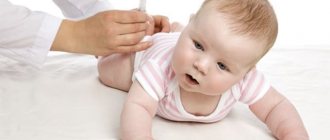After the Mantoux test, you can vaccinate immediately, but after measuring the papule. If a result is obtained that is suspicious for tuberculosis, then the vaccine is administered only after examination by a TB specialist. For children and adolescents prone to allergic reactions, the doctor may recommend waiting until the skin test marks disappear.
If the situation is the opposite - the vaccine is administered, and then you need to get Mantoux, then after the flu shot you need to wait 28 days. When using live vaccines against measles, rubella, mumps and DTP (whooping cough, diphtheria, tetanus), the interval should be at least 6 weeks. The Mantoux test is a screening test for the administration of BCG (weakened tuberculosis bacteria); vaccination is carried out immediately after a negative result is detected for children aged 7 and 14 years.
Why did the child become sick more often?
First of all, unusually close contact with a large number of children causes the spread of infectious diseases. Therefore, the child may begin to get sick more often.

This is how the child’s immune system “trains” practically in combat conditions. As a rule, children get sick less and less by school. However, if the child did not attend kindergarten, then in primary school he may begin to experience what his peers have already experienced: frequent colds and infectious diseases.
In addition to harmless colds, highly contagious infections become especially dangerous: influenza, measles, chickenpox, whooping cough, diphtheria, pneumococcal and meningococcal infections.
What not to do?
What should not be done after the Mantoux test to prevent the result from being false positive:
- disinfect the site of the Mantoux test with antiseptic agents (iodine, hydrogen peroxide or brilliant green);
- cover with a bandage or bandage - this provokes an inflammatory process;
- rub, comb, touch the injection site with your hands to prevent infection;
- it is better to avoid contact with water, as required by doctors;
- eat strong allergens (chocolate, honey, nuts, seafood, etc.);
- contact with household allergens - animal hair, chemicals for cleaning the house, synthetic fabrics, etc.
Pediatrician of the 2nd category, allergist-immunologist, graduated from the Belarusian State Medical University of the Federal Agency for Health and Social Development. Read more »
Source
What vaccinations should I have for kindergarten?
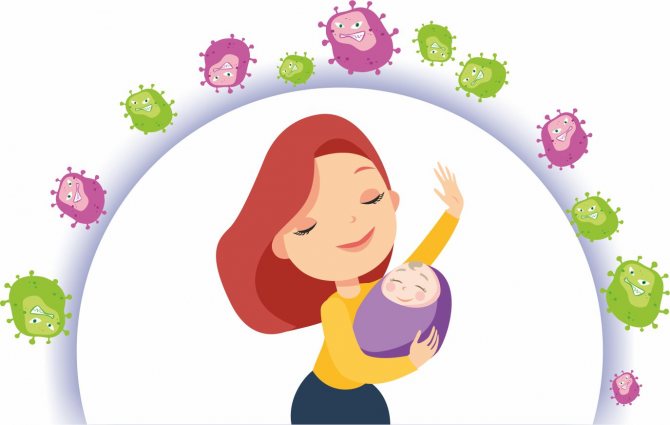
According to the National Vaccination Calendar, by the age of 1.5-3 years, a child must receive routine vaccination against infections:
Tuberculosis
Siberia has long retained the sad leadership in Russia in terms of tuberculosis incidence. Therefore, already in the maternity hospital, babies should receive a BCG vaccination (BCG - Bacillus Calmette and Geren).
Hepatitis B
The hepatitis B virus leads to the development of acute and chronic liver diseases to complications such as cirrhosis and liver cancer. The risk of contracting the virus varies in different regions of the world. In Russia, the prevalence rate among the population is average (2-8%). Vaccination is given to children in the first hours of life. Vaccination consists of 3 injections according to the scheme 0-1-6 months.
Pneumococcal infection
A whole complex of diseases is caused by the bacterium pneumococcus (Streptococcus pneumoniae). It causes pneumonia, bronchitis, otitis media, meningitis, sinusitis, sepsis and a number of other diseases. Children with weakened immune systems and older people with chronic diseases are particularly susceptible. The vaccination course consists of 2 vaccinations (at 2 months, at 4.5 months), and revaccination at 15 months.
Whooping cough
This is an acute bacterial infection transmitted by airborne droplets. Whooping cough is characterized by paroxysmal spasmodic cough, often with the development of convulsive syndrome. The disease is very dangerous for children under 2 years of age. In recent years, there has been a shift of the disease to older age groups of children (7-14 years), and adults are also becoming ill. Before entering kindergarten, vaccinations are recommended according to the schedule of 3-4.5-6 months, as well as revaccination at 18 months.
Diphtheria
The infection is transmitted by airborne droplets. The disease is characterized by inflammation of the mucous membranes of the oropharynx and nasopharynx. Possible complications: damage to nerve and other cells by extremely poisonous diphtheria toxin, and, as a result, paralysis. With paralysis of the respiratory tract, asphyxia may occur (with croup), causing death. The national calendar provides for vaccination according to the schedule of 3-4.5-6 months, as well as revaccination at 18 months, 6-7 years, 14 years. Adults need a booster vaccination every 10 years.
Tetanus
This infection is caused by tetanus bacillus. An acute course of the disease is characteristic, mainly with damage to the nervous system and convulsions. The patient is not contagious, and transmission of the infection occurs through contact with the pathogen: bacterial spores can persist for a long time in soil, water, and on household objects. In case of illness, the probability of death is high. After illness, immunity does not develop! The vaccination schedule is identical to diphthreia vaccinations: 3-4.5-6 months; revaccination at 18 months, 6-7 years, 14 years. Adults – every 10 years.
Polio
This is a viral disease caused by damage to the nervous system in the form of paralysis and meningitis. It is highly contagious. Humans are the only reservoir for poliovirus, which is spread through the oral-fecal route or through dirty hands. For prevention, two types of vaccines are used: inactivated and live. The first 2 vaccinations are given with inactivated polio vaccine (IPV) at 3 and 4.5 months, and the next with oral polio vaccine (OPV) at 6, 18, 20 months and 14 years. According to indications, all vaccinations can be done with an inactivated vaccine.
Haemophilus influenzae infection
Caused by Haemophilus influenzae. The disease is characterized by damage to the respiratory system, central nervous system and the development of purulent foci in various organs. Leads to the development of pneumonia, meningitis, acute otitis, epiglotitis, sepsis. The source is humans, the infection is transmitted by airborne droplets. Vaccination is done according to indications according to the schedule: 3-4.5-6 months and revaccination at 18 months.
Measles
One of the most contagious diseases in the world! It has almost 100% susceptibility (an unvaccinated person has a very high chance of becoming infected through contact with the virus). You can become infected not only from humans (the virus persists in a room after the patient has been there for up to 4 hours). It has high volatility (it is transferred from room to room and even across floors with air flows). Vaccination is carried out twice: at 12 months and 6 years for children who have not had measles.
Rubella
This is an acute viral infection transmitted from person to person. In children, rubella has a generally mild course. But in some cases it causes neurological complications: encephalitis, myelitis, encephalomyelitis, polyneuritis. Manifested by respiratory manifestations, intoxication and a specific rash. Rubella is extremely dangerous for pregnant women, because can cause severe multiple fetal malformations. The vaccination is given twice at 12 months and at 6 years, as well as for girls aged 18-25 years.
Mumps (mumps)
An acute viral infection, transmitted by airborne droplets, affecting glandular organs. The course of the disease is not as scary as its complications: pancreatitis, meningitis, meningoencephalitis. Separately, it is worth noting the danger of mumps for boys - the infection suffered in childhood often leads to infertility. The first vaccination against mumps is given to a child at 1 year of age, and revaccination at 6 years of age.
Flu
WHO estimates that annual influenza epidemics result in 3–5 million cases of severe illness and 390–650 thousand deaths. Because the flu mutates, a new vaccine is developed every year. Both adults and children should be vaccinated annually, starting at 6 months.
Hygiene rules
The size of the papule is assessed on the 3rd day after the injection. In order for the result to be reliable, you need to follow some rules at this time. They concern hygiene, contact with water, allergenic substances and products.
If a child is prone to allergies, you should exclude everything that provokes a negative reaction in him - dust, pets, chemicals, etc. You can prepare for the Mantoux test by drinking antihistamines (Fenistil, Claritin) 2 days before the procedure. The best solution for children with allergies would be to consult an allergist, who will determine how long before and in what dosage to take these medications.
Is it possible for a child to walk before and after Mantoux?
You can walk and play sports after the Mantoux test. The only limitation may be the advice not to wrap the child up. If he sweats, the injection site will become inflamed or tight clothing will chafe. Avoid getting rain or snow on the button; it is better to cover it with a long sleeve of clothing.
Walking before and after Mantoux is not only possible, but also necessary
These factors sometimes lead to a false positive result. Thus, there are no restrictions on walking in the fresh air, provided that the site where the tuberculin test was administered is properly cared for.
Is it possible to swim?
Experts cannot answer this question unequivocally. Some of them believe that the rule not to wet the Mantoux test is outdated. They associate the ban with its predecessor, the Pirquet test, in which the skin was scratched and special reagents were applied to it. It is believed that now there is no reason to avoid contact with water, because the drug is administered subcutaneously.
Others believe that water procedures contribute to distortion of the result and infection by microorganisms living in tap water. Traditionally, the ban on contact with water is valid for 48 hours after administration of the drug.
If suddenly a child accidentally wets the “button,” you need to carefully wipe the skin and report this to the health care provider when measuring the papule. After 2 days, it is not prohibited to take a shower or bath, but you should not swim in open water to avoid infection of the wound.
You cannot take a steam bath or sauna. High temperatures and exposure to steam can injure the injection site.
What's not included in the calendar?
Vaccination opportunities are much wider than the National Vaccination Calendar of the Russian Federation. The Expanded Program on Immunization is available at private vaccination centers. What else can you protect your child from:
Chicken pox
It is highly contagious. This disease is considered mild, but 5% have complications, sometimes very severe. It is not uncommon for a secondary bacterial infection to occur with the development of purulent skin lesions, which can leave cosmetic defects. It has a high risk of infection (80-90%), and the patient becomes infectious even before the rash appears. For protection, you need to get 2 vaccinations with an interval of 6 months. The first vaccination protects by 87%, the second – by 99%, immunity after the second lasts for life. Vaccinated from 1 year of age.
Meningococcal infection
A bacterial form of meningitis that affects the lining of the brain and spinal cord. The danger of infection is that it develops to severe forms at lightning speed (within 24 hours) and is easily transmitted by airborne droplets - through coughing, sneezing and even talking. Children under 5 years of age are most susceptible to the disease. Vaccination of children aged 9 to 23 months is carried out with a course of vaccinations: 2 injections with an interval of at least 3 months. For persons aged 2 to 55 years, vaccination is carried out once.
To bream encephalitis
Encephalitis is the most dangerous of tick-borne infections with damage to the central nervous system and a variety of consequences - from complete recovery to health problems leading to disability and even death. Many people prefer outdoor recreation with the whole family, and begin to take their children with them from a very early age. In such cases, it is reasonable to vaccinate the child first (children are vaccinated from 1 year old). It is also worth considering vaccinating the whole family against tick-borne encephalitis for those who have dogs. Very often, pets bring ticks on themselves from a walk.
Primary vaccination will consist of 3 vaccinations. The interval between the 1st and 2nd vaccination is from 1 to 3 months; immunity is developed already 2 weeks after the second vaccination. The third vaccination is done 9-12 months after the 2nd.
Hepatitis A
The second name is infectious jaundice, and popularly it is the disease of dirty hands. When children come into contact with people in public areas, the risk of developing intestinal infections increases, and hepatitis A is one of them. Vaccination is given to children from 1 year of age. The vaccine requires two doses, 6 months to a year apart.
Can a vaccine be given after Mantoux?
After the Mantoux test, the child can be vaccinated, but only if the reaction has been assessed and there are no complications from the administration of tuberculin:
- rashes and itching on the skin;
- general weakness;
- headache;
- swelling;
- temperature rise to 37.1-37.2 degrees.
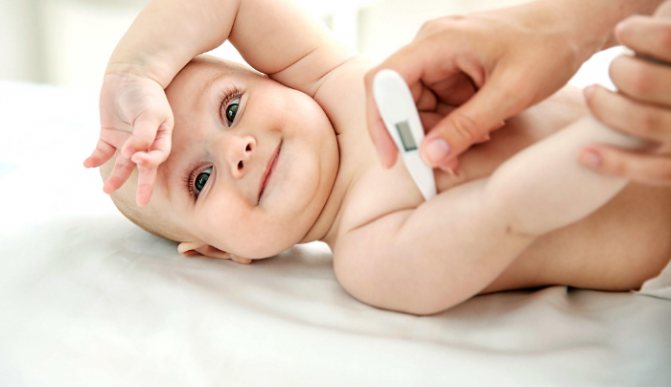
Typically, the pediatrician recommends against any vaccinations for patients who need additional examination:
- with a “turn” in the tuberculin test (an increase of 6 or more millimeters compared to the previous result);
- the transition of negative Mantoux to positive after a year;
- the size of papules (elevations on the skin) is from 12 mm;
- the appearance of blackening of the skin, blisters, and enlarged lymph nodes at the injection site.
Such children and adolescents are sent to a tuberculosis clinic, and after ruling out infection, the TB specialist writes a conclusion about the possibility of administering immune drugs (vaccines and serums, immunoglobulins). If the diagnosis of tuberculosis is confirmed, then any vaccinations are postponed until complete cure.
We recommend reading about the age at which Mantu is made. From the article you will learn how often the Mantoux test is done in kindergarten and school, the test schedule, and alternative diagnostic methods in older age. And here is more information about what the Mantoux vaccination is.
What vaccinations should you have for school?
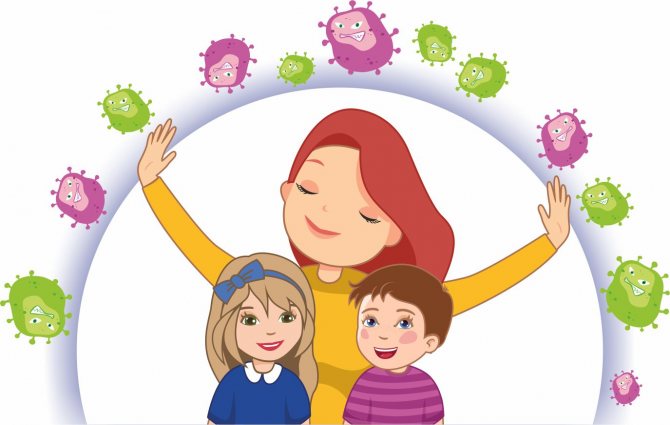
A child should receive most vaccinations before the age of 20 months. This is vaccination against all those infections mentioned above. We will summarize everything that has been written and focus on those vaccinations that need to be repeated, i.e. revaccination at 6-7 years of age.
So, according to the National Vaccination Calendar, a preschool child should be vaccinated against the following infections:
- tuberculosis,
- Hepatitis B,
- pneumococcal infection,
- whooping cough, diphtheria, tetanus,
- polio,
- hemophilus influenzae type b (for children at risk),
- measles, rubella, mumps,
- influenza (annually).
Before entering school, a series of repeated vaccinations (re-vaccinations) should be carried out against:
- measles, rubella, mumps,
- whooping cough, diphtheria, tetanus,
- influenza (annually).
Vaccinations according to the expanded program are recommended:
- from chicken pox,
- from meningococcal infection,
- from tick-borne encephalitis,
- hepatitis A.
Why get vaccinated against rare diseases?
Indeed, some diseases on the list are extremely rare. And this is the merit of vaccination.
Success in the fight against infections has a downside - people stop getting vaccinated because they see a prosperous environment and fewer and fewer threats. Thus, contagious infections, which many have already forgotten about, may again come to the fore.
In Russia, an example of this phenomenon was the diphtheria epidemic in the mid-90s. It seemed that it was extremely rare, but a decrease in the number of vaccinations led to an increase in diseases - more than 100 thousand people. Mass vaccination of children made it possible to stop the epidemic.
Not long ago, many countries around the world experienced outbreaks of measles. In November 2021, WHO published data that there were 413,308 confirmed cases of the disease in 187 countries.
Also in 2019, outbreaks of meningococcal infection were recorded in Novosibirsk.
The only effective measure of protection against many infections is to take advantage of the achievements of modern medicine and maintain high vaccination coverage.
Conclusion
If no reasons for medical withdrawal have been identified, then mantu after DTP can be done immediately, but it is better to give the baby 3-4 days to rest. The drug Pentaxim after mantoux is also recommended to be administered with the same time limit, so as not to overstrain the body and immune system, but to act smoothly and gently. It turns out that after manta, you can get a DTP vaccination almost immediately, since this is a simple test, but in another sequence you need to wait a month, since the body has endured the load.
If there are no vaccinations, will there be punishment?
This is also just under consideration. The authors of the initiative propose fining officials 10–30 thousand rubles, and legal entities 50–100 thousand rubles. Now only disciplinary measures are used. If the child has not been vaccinated, then in this case restrictions are established (Part 2 of Article 5 of the Law on Immunoprevention of Infectious Diseases).
Due to this restriction, failure to have the required vaccinations may result in you being denied access to educational institutions. But it is important to understand that such a refusal comes into effect in the event of mass infectious diseases or the threat of epidemics.
In addition, without vaccinations they may not be allowed into a number of countries, both for a short stay and for living and working.
Sample indicators
The test itself for the presence of immunity to tuberculosis is not a vaccination. It is done every year until the child turns 14 years old, checking the activity of his immune cells after BCG vaccination. The next vaccination after Mantoux can be given on the third day if, when checking the diameter of the papule using a special table, a negative (or positive, but within the normal range) reaction was revealed, the indicator of which is the size of the compaction not exceeding 1 mm.
If the results are questionable or positive, the doctor uses additional methods of testing for tuberculosis. The diameter of the compaction in case of a doubtful result is 2-4 mm, and in case of a positive result – more than 5 mm. The absence of any reaction is also a positive result, after which the next scheduled vaccination cannot be given. A positive reaction during a tuberculin test according to the degree of intensity can be:
- weak – from 5 to 9 mm;
- medium - from 10 to 14 mm;
- pronounced - from 15 to 17 mm.
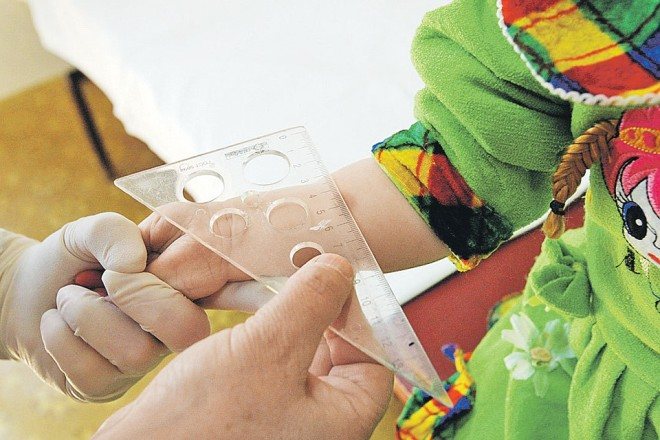
Lack of reaction is observed if the patient has not been vaccinated with BCG, or indicates that the vaccination had no effect and specific immunity has not been formed. In both cases, this result indicates the vulnerability of the baby’s body.
The formation of a large papule can be caused by various reasons, including infection of a child with Koch's bacillus. For any positive test results, doctors find out the exact reasons for this reaction of the body and only after that make their conclusion.
To help parents
To make vaccination go smoothly and easily, read our article “How to prepare for vaccination for both you and your child”
Remember, a child needs vaccinations not only because of the requirements of health workers at the clinic. If there is more than one child in a family, it is not uncommon for older children to “bring” an unexpected infection to the family from kindergarten or school, and children who have not yet had time to be vaccinated suffer. Vaccination is a protective line for all family members.
Take care of yourself and your loved ones in advance.
And be healthy!
Side effects
Among the negative reactions of the body, the following manifestations are distinguished:
- allergies in the form of urticaria, swelling of the face and mucous membranes, itching of the skin;
- diagnosing lymphadenitis - inflammation of the lymph nodes in the armpit, groin and under the jaw;
- increased body temperature;
- headache;
- gagging;
- loss of appetite;
- fatigue even after a long rest and drowsiness.
According to medical experts, such a reaction of the body cannot affect the final result.
There may be several reasons for the body’s negative reaction. First of all, this is non-compliance with contraindications and established prohibitions for the procedure. Often the reason may be the use of vaccinations of inadequate quality or violation of the rules for introducing the drug into the body. The procedure must be performed by a qualified medical professional. He calculates the dosage of the product and monitors sterility. Since the drug is administered intradermally, the appearance of blood at the time of administration is excluded. Its occurrence indicates the receipt of false results. After opening the ampoule, the drug can be used for two hours.
Carrying out the procedure of vaccinating the body has a number of prohibitions.
It is not recommended if a child has seizures of epilepsy, bronchial asthma, rheumatism and immunodeficiency.
During the period of cold pathologies, the result obtained is considered unreliable. It is better to carry out the procedure after one month from the moment the body recovers.










